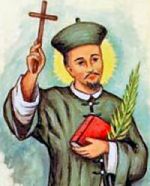The MOST Theological Collection: Outline of Christology
"XX. The Miracles of Jesus"
Rationalists attack the very possibility of miracles. Some, with a scientific bent, say the universe is a closed system, that is, everything is covered by natural laws, and there is no exception to them.
R. Bultmann makes foolish statements about miracles. First, nothing is certain: "Conclusive knowledge is impossible in any science or philosophy", ( in Kerygma & Myth, tr. Reginald Fuller, ed. H. W. Bartsch. Harper & Row Torchbooks, NY. 1961, 2nd ed. I. p. 195). Yet he is certain about many things, e. g., "It is impossible to use electric light and wireless... and at the same time to believe in the New Testament world of spirits and miracles" (ibid. p. 5). He goes on to say that if natural science can explain something, it could be called a miracle. But if it cannot explain, then it would be superstition to call it a miracle. (ibid. pp. 197, 199).
R. E. Brown ("The Myth of the Gospels without Myth" in St. Anthony's Messenger, May 1971, pp. 45-46) said that no respectable scholar, Catholic or Protestant, would accept all the Gospel miracles: that would be fundamentalism, and would make New Testament times like a fairyland. He adds that the more conservative accept some miracles, such as the virginal conception and resurrection, but they do not believe in possession by the devil.
Some modern homilists, wishing to appear up to date, give utterly unsupported ways of explaining away miracles. Thus they will say that the "miracle" of the loaves really came about because Jesus induced people who selfishly had been hiding loaves under their cloaks to get them out and share them!
The New Jerome Biblical Commentary (pp. 1320-21) takes a better stance: "Extraordinary deeds of Jesus not easily explained by human means, esp. exorcisms and cures, were never denied in antiquity, even by his enemies, who referred his miracles to the power of the devil, (Mark 3: 20-30 par) and in later polemics to magic." But they did not deny the fact that He did such things. Really, when we consider that His first followers - and we too -believed their eternity depended on the truth about Him, they would not falsify such things. Many today who would not deny the cures would object to accepting the nature miracles, such as calming the storm. But there is no more reason to reject them than the cures.
R. Bultmann ("The Study of the Synoptic Gospels: in Form Criticism, tr. F. C. Grant, New York, Harper & Row Torchbooks, 1962, pp. 37-39, since he has ruled out in advance the very possibility for miracles, tries to use Form Criticism to discredit the cures done by Jesus. He says the narratives of Jesus' cures are like those of cures worked in pagan healing stories. He says he finds the following items: a)the grave condition of the patient - perhaps mentions of failures by doctors - the healer imposes hands and utters the healing word - the bystanders cry out in wonder as the one healed shows he is healed - b) the healing word is often in an unknown tongue, with no one present.
The first group, a) is very inane. What else would one expect in any cure than that the condition of the patient is described, and the healer imposes hands etc. As to the second group, b) the healing word may be in a strange tongue in pagan stories, but not in the Gospels. A few times Aramaic words are cited by the Gospel - but that was not an unknown tongue there, it was the most common language of Palestine at that time. As to the absence of witnesses, usually there are many in the Gospel stories. Furthermore, Bultmann fails to mention significant points of difference: In the pagan Greek stories there are curious and sometimes indecent details, the wonder-workers are usually skilled in medicine or magic, are amorous or vengeful, they are highly motivated by money. Also, in the pagan Greek reports there is no spiritual significance. Further, in the pagan stories, miracles normally happen when the patient is asleep in a temple (incubation), but never so in the Gospels. In the Greek stories there is much gibberish and incantation - nothing of the kind in the Gospels. And even if things were more similar, that would not prove both had the same source. (A more detailed comparison and contrast is found in Laurence J. McGinley, "Hellenic Analogies and the Typical Healing Narrative" in Theological Studies 4, 1942, pp. 385-419.
Claims are also made that the story of Jesus is like that of the Life of Apollonius of Tyana by Philostratus. It is strange anyone would seriously suggest such a comparison. The Gospels were written less than 40 years after the death of Jesus. Philostratus wrote long after the events. Apollonius is really just a Pythagorean philosopher, not one who claimed to be sent by God to bring eternal salvation by His own suffering. Philostratus and Apollonius believed in many pagan gods. When the mother of Apollonius is pregnant, the Egyptian god Proteus appears to her -it seems Apollonius is to be a reincarnation of Proteus. Philostratus has some long philosophical discussions. At Olympia (Book 8. 15-19) all of Greece came before Apollonius, who held 40 days of philosophical discussions and debates. In India, Apollonius sees dragons about 60 feet long (3:7). Their eyes held mystic gems, so large that if hollowed out they would hold enough drink for four men (3:27). In one place he sees robot tripods that serve meals (3:27). Apollonius finds the source of the Nile where there are giant geysers, and fears deafness from their roar (6:26). He fears also the demons who used it for a gathering place. As to cures: Apollonius finds a satyr annoying women, and quiets the satyr with wine (6:27). He meets a woman whose son is possessed by a demon, which is actually the ghost of a man who fell in battle. The man had been fond of his wife. But she married three days after his death, and so he became homosexual over a 16 year old boy. Apollonius gives a threatening letter for the ghost (3:38). And there is more similar nonsense.
Many today try to say miracles were not intended to prove anything, t hey were just signs. So we ask: Did Jesus use miracles to prove His claims? The New Jerome Biblical Commentary on p. 1371 says that "Consistently, Jesus is presented as refusing to work miracles to show off his power." Five texts are cited in support of this assertion. But they do not support it. In Mt 4. 5-7 Jesus refuses the temptation of satan. In Lk 23. 6-12 He refuses to amuse Herod. In Mk 8. 11-13 and Mt 12. 38-42 (cf. also Mt 16. 1-4) there is an insincere request for a miracle by those who have already seen many of them: hence Jesus refuses. In Mk 15. He refuses to come down from the cross. So these texts do not support the claim of NJBC. Really the claim of NJBC is worded unfortunately. Jesus did not use miracles "to show off his power." No, it was for a better purpose, to prove His mission. He very explicitly cured a paralytic (Mk 1. 1-2 and parallels) to prove He had the power to forgive sins. He commonly demanded faith in Him to work a cure, e. g, in Lk 8. 41-56 before raising the daughter of Jairus: "Fear not, just believe and she will be well." Mt. 9. 27-29 and parallels tells of blind men asking for sight. Jesus asks: "Do you believe that I am able to do this?... . Be it done to you according to your faith." In John 5. 36 and 14. 10-11 He says if they do not believe Him, believe His works.
We suspect this tendency to downgrade miracles as proofs comes from a dislike of apologetics. But from the beginning of the Church miracles have played a great role in apologetics (cf. our summary of apologetics at the beginning of this study). This use of miracles is found already in the very first apologist, Quadratus who wrote an Apology to Hadrian about 123. In it he says that in his day some were still alive who have been cured by Jesus or raised from the dead by Him. This of course need not be in 123 AD, but it would surely cover the period 80-90 in which many now place the Gospels of Matthew and Luke. Thus many would be on hand who could give firsthand testimony about Jesus. (There are more, cf. again the summary of apologetics early in this study).






